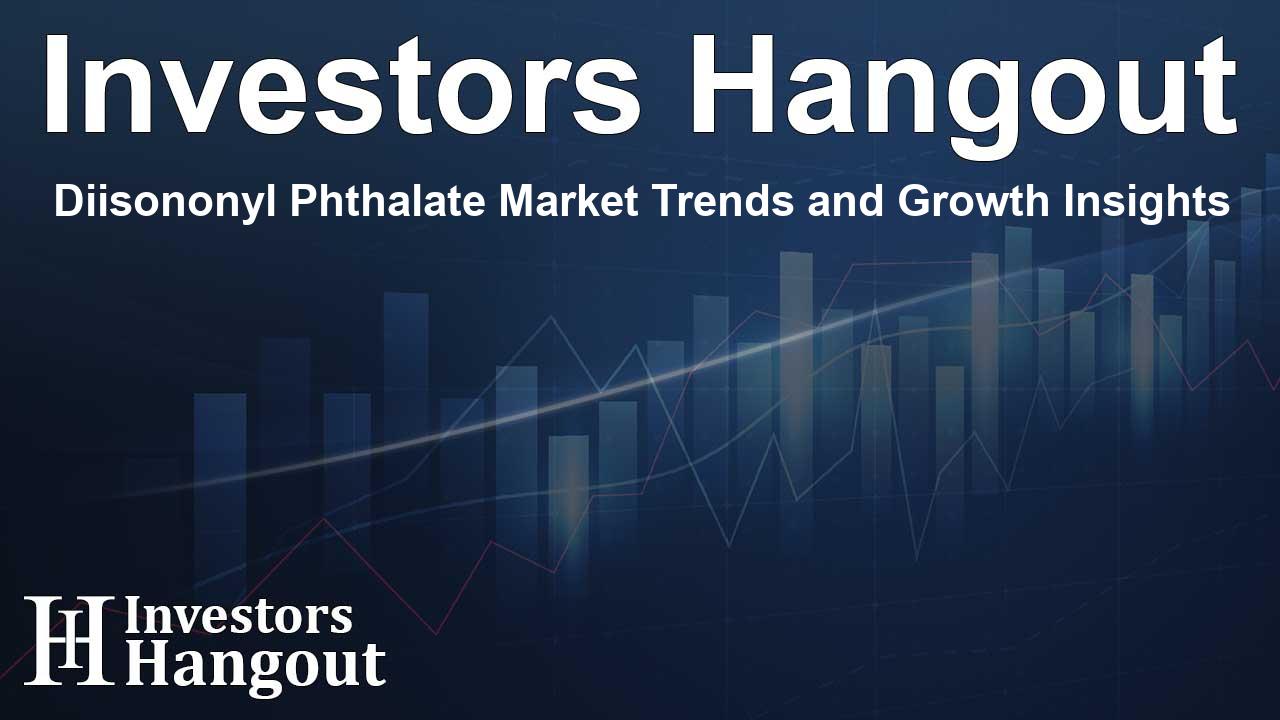Diisononyl Phthalate Market Trends and Growth Insights

Diisononyl Phthalate Market Overview
According to recent estimates, the global diisononyl phthalate (DINP) market, valued at USD 2 billion in 2023, is projected to surpass USD 3.25 billion by 2033. This increase is attributed to the growing demand for DINP in various applications, especially in the realms of construction and automotive industries. Diisononyl phthalate, primarily used to enhance the properties of polyvinyl chloride (PVC), is a clear chemical known for its high melting point and flexibility. This unique composition allows PVC, when combined with DINP, to become more elastic, durable, and adaptable, thus broadening its range of applications.
Key Insights of the Global DINP Market
Market Dominance by Region
The Asia Pacific region is expected to dominate the DINP market during the forecast period. The rapid industrialization, urbanization, and demographic growth in developing countries such as China and India are significant contributors to this dominance. As disposable income rises within these markets, consumer demand for various sectors, particularly automotive and construction, is set to increase. The combination of a strong supply chain and well-established production infrastructure supports a steady supply of DINP across diverse industries.
PVC Segment Leading the Market
As of 2023, the PVC segment holds the largest market share of 41%, generating approximately USD 0.82 billion in revenue. This segment's growth reflects the high demand for PVC, which is increasingly utilized in packaging, automotive components, and construction materials. The flexibility and durability afforded by the incorporation of DINP make it ideal for a variety of applications.
Market Dynamics Driving Growth
Drivers of Market Expansion
The increasing need for PVC in construction and automotive sectors significantly drives the market. Urbanization and industrial growth have led to heightened demand for housing, healthcare facilities, and infrastructure development. PVC's properties enhance the performance, flexibility, and durability of products used in these sectors, enabling wider application in construction materials, automotive interiors, plumbing, and even medical devices. This trend is anticipated to propel the global DINP market forward.
Challenges and Restraints
Despite the market's growth, certain challenges exist, particularly concerning health concerns associated with DINP exposure. Studies suggest that DINP can disrupt hormone functions and potentially harm reproductive health. Such findings have prompted stricter regulations on its use across various products. Consequently, these health risks may inhibit market growth as regulatory bodies impose tighter controls.
Opportunities for Technological Advancement
Another dynamic factor is the advancement in DINP technology. Continuous research and development are critical in improving the performance of DINP. Innovations in formulations and processes have resulted in enhanced chemical and thermal stability while also promoting biodegradability. This technological progress opens new avenues for applications across industries, ensuring a robust and sustainable market growth trajectory.
Market Segmentation and Major Players
Market Segmentation Overview
The market for diisononyl phthalate is segmented by type, end-use, and region. Key types include PVC, acrylics, and polyurethanes. The end-use segments encompass construction, automotive, consumer goods, electrical and electronics, among others. This segmentation allows for targeted strategies to meet the distinct needs within each market category.
Leading Companies in the Market
Several prominent players shape the global diisononyl phthalate market, including AEKYUNG, Azelis Group, BASF SE, Evonik Industries, ExxonMobil, KLJ Group, LG Chem, Mitsubishi Chemical Holdings Corporation, Nan Ya Plastics, and UPC Technology Corporation. These companies play pivotal roles in addressing market demands through their innovative contributions and operational efficiencies.
Frequently Asked Questions
What is Diisononyl Phthalate?
Diisononyl Phthalate (DINP) is a chemical compound commonly used to enhance the properties of PVC, making it more flexible and durable for various applications.
What industries utilize DINP?
DINP is widely used in construction, automotive, consumer goods, and electrical and electronics markets due to its beneficial properties.
What is the projected growth of the DINP market?
The DINP market is projected to reach USD 3.25 billion by 2033, growing from USD 2 billion in 2023.
Who are the major players in the DINP market?
Key players include AEKYUNG, BASF SE, Evonik Industries, and ExxonMobil, among others, known for their innovative approaches and large-scale production.
What are the health risks associated with DINP?
Health concerns mainly involve hormone disruption and reproductive health impacts, leading to increased regulatory scrutiny over its use in consumer products.
About Investors Hangout
Investors Hangout is a leading online stock forum for financial discussion and learning, offering a wide range of free tools and resources. It draws in traders of all levels, who exchange market knowledge, investigate trading tactics, and keep an eye on industry developments in real time. Featuring financial articles, stock message boards, quotes, charts, company profiles, and live news updates. Through cooperative learning and a wealth of informational resources, it helps users from novices creating their first portfolios to experts honing their techniques. Join Investors Hangout today: https://investorshangout.com/
Disclaimer: The content of this article is solely for general informational purposes only; it does not represent legal, financial, or investment advice. Investors Hangout does not offer financial advice; the author is not a licensed financial advisor. Consult a qualified advisor before making any financial or investment decisions based on this article. The author's interpretation of publicly available data shapes the opinions presented here; as a result, they should not be taken as advice to purchase, sell, or hold any securities mentioned or any other investments. The author does not guarantee the accuracy, completeness, or timeliness of any material, providing it "as is." Information and market conditions may change; past performance is not indicative of future outcomes. If any of the material offered here is inaccurate, please contact us for corrections.